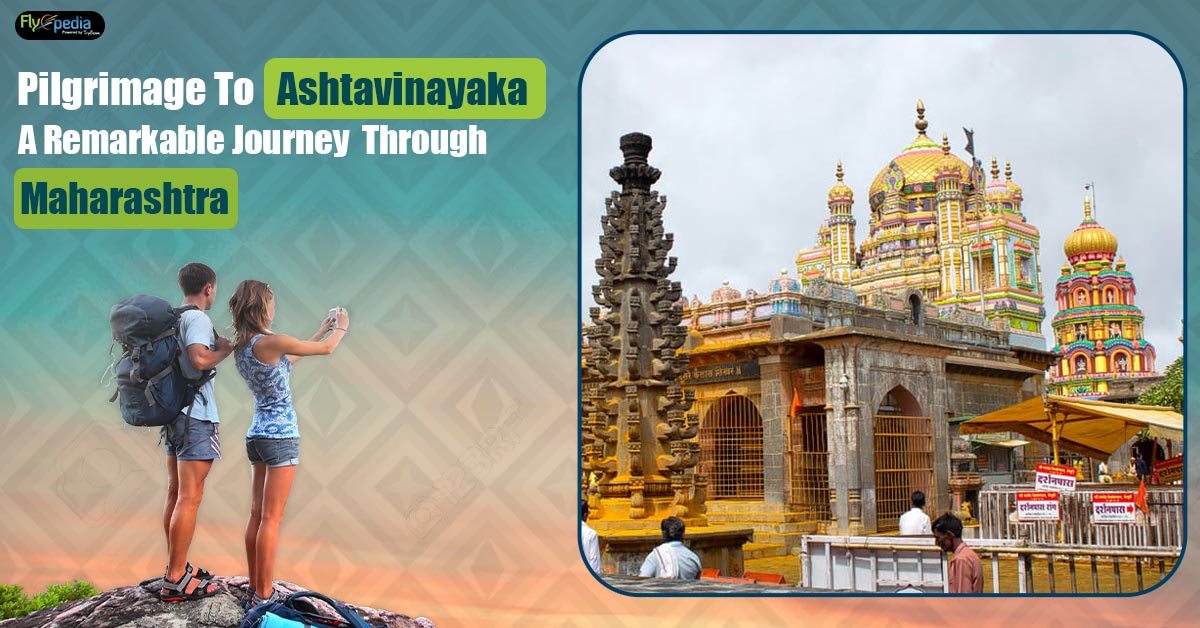In the state of Maharashtra, there are 8 revered shrines collectively known as the Ashtavinayak Temples. Each of these temples is associated with Lord Ganesha mythology and is considered a part of the holy places dedicated to Lord Ganapathi. Millions of tourists across the globe visit this well-known pilgrimage route in Maharashtra. Even if you have planned this trip at the last moment with last minute flights , you need to allocate at least 3-4 days for the trip, as it is believed that this spiritual journey ought to be undertaken in a specific sequence.. The Siddhivinayak, Ballaleshwar, Varadvinayak, Chintamani, Girijatmaj, and Vignahar temples should come first, then end up coming to Sri Moreshwar and Siddhivinayak. The Mahaganapathi Temple in Ranjangaon, Pune, is the final temple on the list. Devotees are believed to accomplish their pilgrimage only after visiting the initial temple again after visiting the other seven temples.
List of the temples as per the specific Pilgrimage for Darshan:
-
Mayureshwar Temple, Morgaon
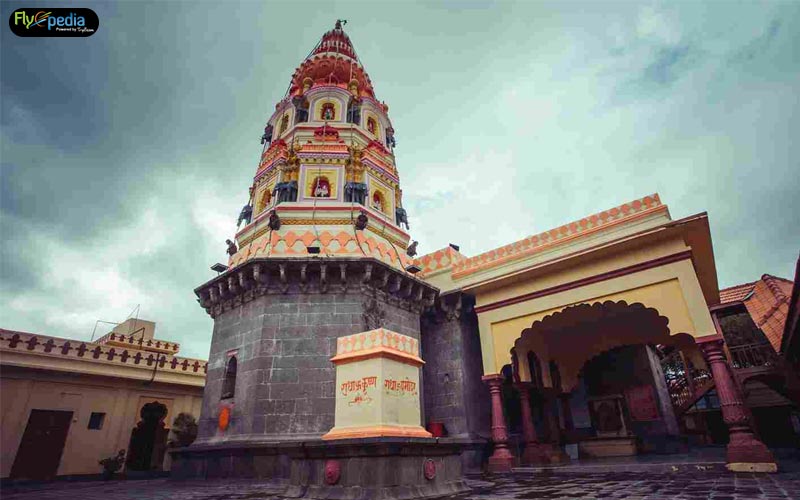
The Mayureshwar Ashtavinayak Temple in Morgaon, close to Pune, is the main temple that you must see during the Ashtavinayak spiritual journey. Here is where your spiritual voyage begins and ends. The temple was a black stone building constructed under the Bahmani Sultanate’s rule (14th – 16th century).
A little Islamic architectural accent is evident in the construction of the Temple’s four gates. Four-sided minarets give the building a mosque-like appearance. The eight directions or corners of the temple are graced by eight Ganesha idols. These people take the incarnations of Ekadanta, Mahodar, Gajanana, Lambodar, Vikata, Vignaraja, Dhumravarna, and Vakratunda.
It is considered that Lord Brahma personally erected the original Ganesha idol here. The little idol was constructed using sand, iron, and diamonds. Eventually, the Pandavas covered this statue in a copper sheet and hid it behind the one that was being worshipped at the time. Lord Ganesha’s idol is special. The statue shows him sitting, his trunk facing left, and his three eyes to the side. Diamonds are earmarked to adorn the eyes and the abdomen. On the upper side, Buddhi and Siddhi are visible, together with Nagaraj, the Lord of Snakes.
It is imperative that you double-check your itinerary list when booking cheap tickets to India.
-
Siddhatek Ganpati Temple
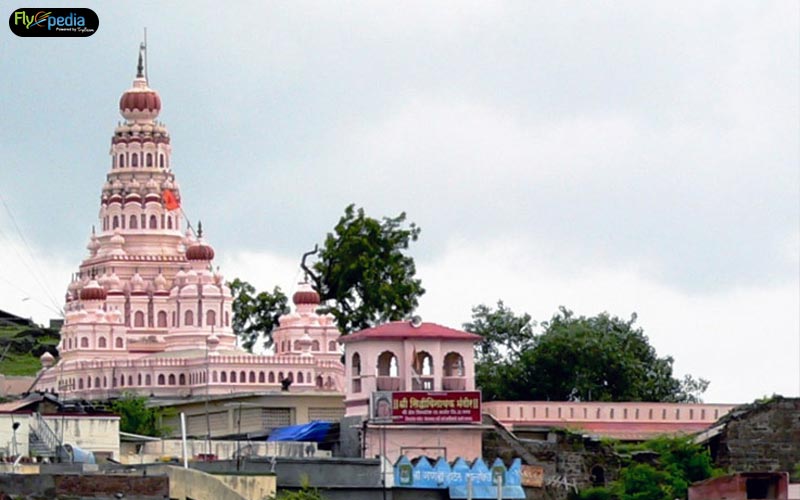
The Siddhivinayak Temple, located near Siddhatek in the Ahmednagar district of Maharashtra, is the second temple in the Ashtavinayak series of temples devoted to Lord Ganesha. The Temple is situated next to the River Bhima on a hill.
The original special four-door temple for Lord Ganesha is thought to have been built by Lord Vishnu. However, the temple was destroyed by natural causes. The temple was rebuilt and dedicated to the original idol during the Peshwa era. The deity’s idol is Swayambhu in nature and is 3 feet tall by 2.5 feet wide. The trunk’s rightward tilt symbolizes Lord Ganesha’s ferocious form. On one lap are the idols of Riddhi and Siddhi. The Lord is flanked on both sides by the statues of Jaya and Vijaya, the gatekeepers of Lord Vishnu’s residence Vaikuntam.
-
Ballaleshwar Pali Ganpati Temple
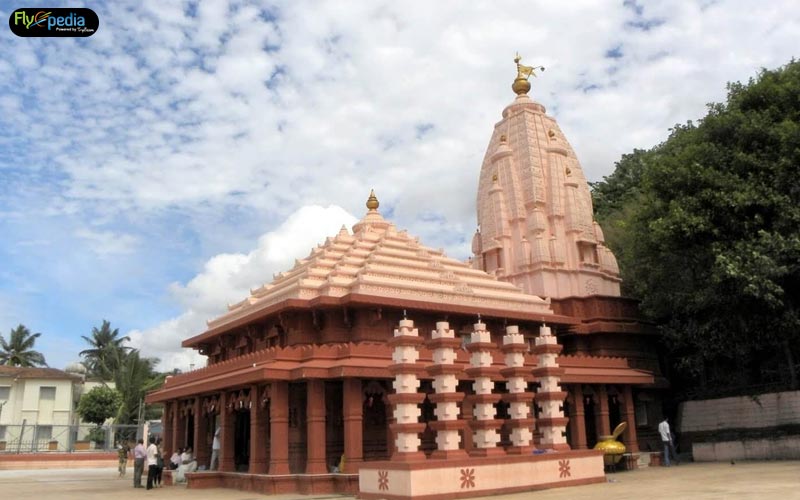
The Ballaleshwar Temple is located in Pali Village in Maharashtra’s Raigad district. This is the third of the three Ashtavinayak Temples that should be attended. Baburao Phadnavis and his son Morobo Dada Phadnavis rebuilt and expanded the Temple in 1770. The Temple has remarkable construction. The temple was constructed by the Peshwas in the form of “Shri.” The Temple has two lakes flanking each of its sides. On the day of the Winter Solstice (December 21), the Temple is constructed such that the morning sunrays fall squarely on the idol, enlightening it.
Overseas travelers, for instance, from Canada can book their online flight tickets from Toronto to Mumbai to experience spiritual solace.
-
Varadavinayak Ganpati Temple
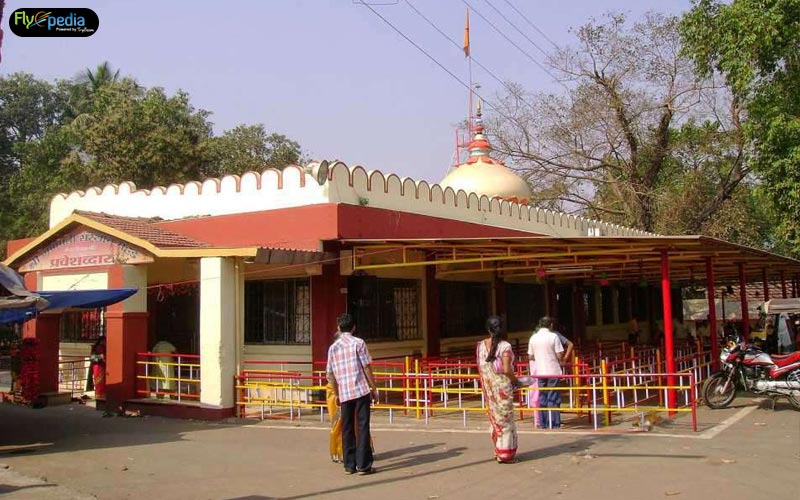
One of the most revered Ashtavinayak Temples is Varadvinayak, and it is nestled in the Mahad hamlet in the Raigarh district of Maharashtra. Here, Lord Ganesha is highly regarded as Varadvinayaka, the provider of riches and prosperity.
Modest, 8 feet long by 8 feet wide, the Temple has a top that is gold-plated. Each side of the temple is surrounded by sculptures of elephants that have been artistically crafted. The northern side of the temple has a Gomukh, or cow’s mouth, from which water is seen to be emanating.
It is considered that Gritsamada built the authentic temple during the Treta Yuga. Nevertheless, Dhondu Paudkar discovered the Ganesha idol in a lake close to the Temple in 1690 AD. Subedar of Kalyan, Ramji Mahadev, was born in 1725. The only Ganesh Temple in which all the visitors are permitted to get into the Shrines and bow down close to the Deity is the Varadvinayak Temple. Once you will visit this temple, your instant plans with last minute flights will be all worthwhile.
-
Chintamani Temple
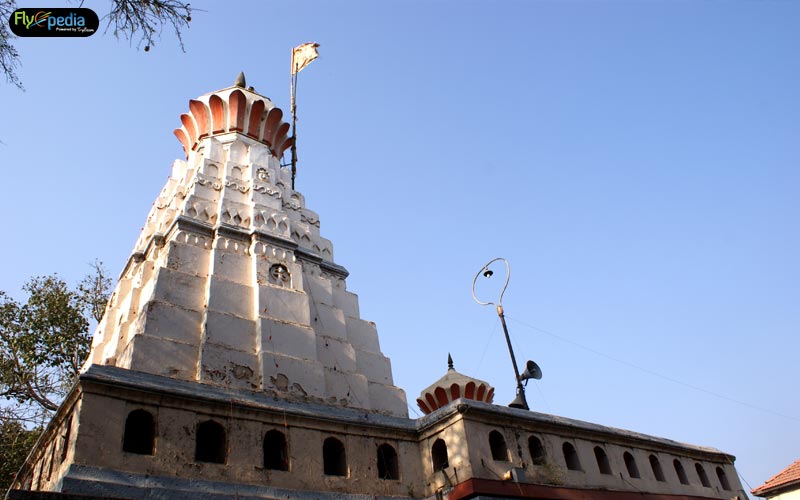
Theur, also known as Kadambapur in Maharashtra, is the origin of the Chintamani Temple. Theur is located where the three minor rivers Bhima, Mula, and Mutha meet. Although the building date of the temple is unknown, tradition holds that it was constructed by Sri Daharnidhar Maharaj Devji, a descendant of Saint Morya Gosavji. During his reign, Madhavrao Peshwa added a Sabhamandap to the temple.
People from around the world book cheap tickets to India to seek the blessings of Lord Chintamani, believed to bring happiness and eternal fulfillment in life. The historical idol represents the family god of Shri Madhavrao Peshwa. It is believed that the illustrious king spent his final days in the temple.
-
Girijatmaj Temple
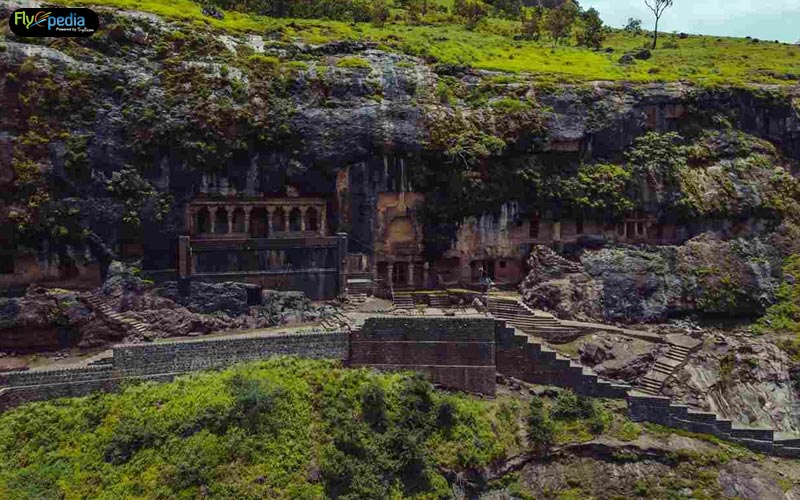
In Maharashtra’s Pune district, at Lenyadri Hills, is the Girijatmaj, or Temple of Lord Ganesha. The temple to Lord Girijatmaj goes all the way back to the first century AD. To get to the cave’s entrance, one must ascend 283 stairs. Artwork portraying Ganesha’s youth, wedding, and fights were done on the cliff’s stone walls when it was transformed from a Buddhist sanctuary to a Hindu pilgrimage.
Girijatmaj’s name is distinct and has two possible meanings. The name of the temple itself means son of Girija, which is another name of Parvati. As a result, the phrase “Girijatmaj” would refer to Lord Ganesha as “The Son of Parvati.” It can also mean “Mountain birth,” as an alternative.
Crafted from a singular piece of stone and devoid of any supports, the entire temple occasionally faces south. Despite being a sealed cavern complex, the shrine was constructed to ensure that no room is ever completely dark. The image of Lord Ganesha is etched in a straightforward fashion on a rock and is thought to be in the form of a child. There is no way to go around the divinity.
-
Vighneshwar Temple
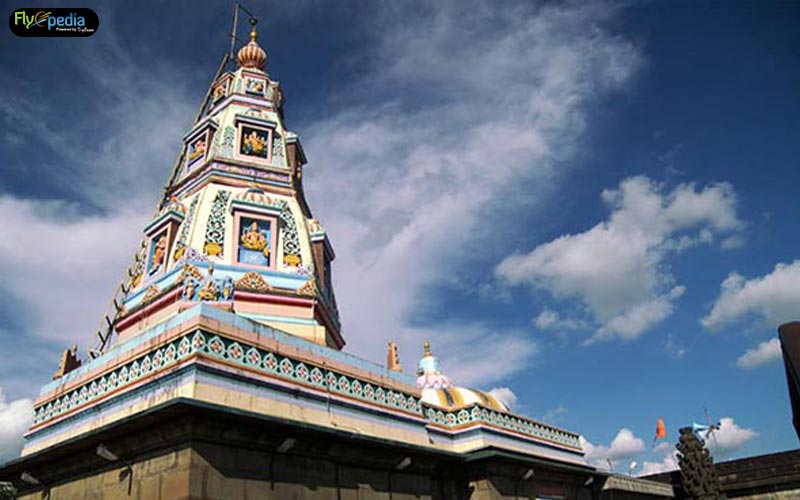
The village of Ozar is where the Vigneshwara Temple is located in Maharashtra’s Pune district. In this region, people worship Ganesh as Vigneshwara, which in Sanskrit means ‘Remover of Obstacles.’ The temple is the seventh Ashtavinayak Temple to be visited in the planned order.
The temple, facing east, boasts a large courtyard. Flanking the entryway (Gatekeepers) are two sculptures of the Dvarapalakas. The main temple construction features three entrances, with the eastern one being the major entrance. According to historians and locals, the Peshwa emperor Chimaji Appa is believed to have constructed the temple in the late 1700s after defeating the Portuguese. The temple’s Shikhar, or spire, is coated in gold.
-
Mahaganapati Temple
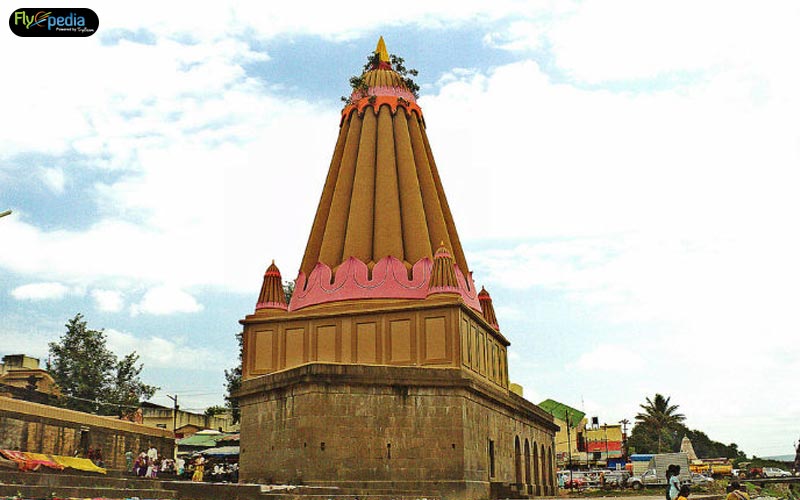
The Lord Mahaganapathi Temple is located at Ranjangaon, 50 kilometers from Pune. The Ashtavinayak Temple is the last one to visit in the series, believed to host the most potent and ferocious manifestation of Lord Ganesh, known as Mahaganapathi.
Scholars suggest the temple’s construction in the ninth century. The Khollam family of Ranjangaon contributed the present worshipped idol.The idol, positioned facing east with a cross-legged stance and its trunk pointing to the left, is accompanied by depictions of Riddhi and Siddhi on either side.
Why should you select the Maharashtra Ashtavinayaka Excursion?
For people who worship Hinduism, reserving cheap tickets to India for the Ashtavinayaka Tour in Maharashtra is not just well-known and noteworthy. But the natural beauty also contributes to its popularity. The region’s hills are where you can find the temples. This route is well-known for being a road trip from Maharashtra. It travels more than 650 miles across the stunning Maharashtra countryside. This journey can include temples like Shirdi and Bhimashankar, along with other surrounding sights. Check out flyopedia.com for best flight deals.
If time is crucial, you can complete the route in no more than two to three days without feeling overburdened. You can visit 1-2 temples leisurely in a day and take in the area’s natural splendor if you have a week to spare for the trip. The hillside and gorgeous setting of this place are even more lovely during the monsoon season. Therefore, this is the ideal moment to go there. Although this journey is also wonderful in the winter.
For a journey with friends or family, the Ashtavinayaka tour in Maharashtra is ideal. Many spiritual enthusiasts choose this vacation destination by chance and visit these temples frequently with last minute flights due to the temple’s antiquity, the breathtaking beauty of the area, and the numerous attractions along the way.
Furthermore, the Ashtavinayaka Temple tour is a great choice if you’re visiting the state or organizing a particular spiritual getaway around Vinayaka Chaturthi.

